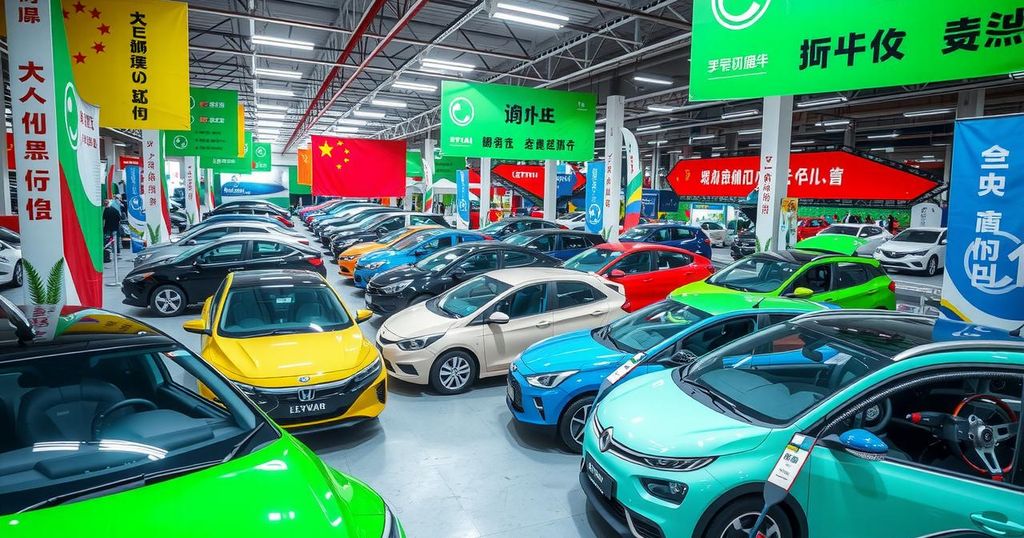Chinese Automakers Target Malaysia for Tariff-Advantaged Manufacturing Shift

Chinese automakers are targeting Malaysia as a potential hub for vehicle production due to favorable tariff conditions compared to the US and Europe. Key players like BYD and Chery are making significant inroads in the Malaysian market, increasing competition with established brands. This shift presents opportunities for consumers but also poses challenges for domestic manufacturers to maintain market share amid intensified competition.
Chinese car manufacturers are increasingly considering Malaysia as a target for expanding their operations due to tariff advantages in the region. The shift is influenced by high tariffs imposed in markets such as the United States and Europe, which may lead to enhanced imports of Chinese vehicles and automotive components at competitive prices. This development could provide consumers with more affordable vehicle options and advanced electric vehicle (EV) technologies while intensifying competition against both domestic and international automotive brands in Malaysia.
Prominent Chinese companies like BYD and Chery are already making notable strides in the Malaysian market, directly competing with established brands from Japan, South Korea, and Europe. While Malaysia experiences minimal direct impact from tariffs imposed by the United States, associated factors, such as rising operational costs and currency volatility, could nonetheless affect the automotive sector’s performance and competitiveness.
The shift by Chinese automakers to Southeast Asia follows a well-established pattern of industrial migration, akin to trends observed in other sectors like electronics and textiles. For instance, SAIC Motor, through its MG brand, launched a $310 million factory near Bangkok in 2018, marking a significant milestone as the first major Chinese automotive facility in Thailand. This strategic investment has translated into market success, with MG surpassing established competitors like Suzuki in Thailand in less than nine months following its entry.
Recently, manufacturers such as BYD and Chery have quickly gained market share in Malaysia, with Chery emerging as the third best-selling non-national automotive brand in a mere 18 months. Additionally, the BAIC-Amber Dual joint venture in Malaysia is set to produce 2,000-3,000 EVs at its Gurun plant during its inaugural year, showcasing the continuing trend of manufacturing migration. Such movements mimic the approach taken by Japanese automakers during the 1980s and 1990s to overcome trade barriers from the United States by establishing regional production hubs.
Southeast Asian nations, including Thailand and Malaysia, are proactively competing to establish themselves as electric vehicle manufacturing hubs, aiming to serve a regional market of approximately 550 million people. However, these nations must manage the delicate balance between attracting Chinese manufacturing investments and protecting their domestic automotive industries from potential market disruptions due to inundating imports.
In Malaysia, the company Perodua sustains its competitive edge through affordable pricing and high local content, offering a degree of protection against currency oscillations and fluctuations in import-related costs. Notably, Chinese electric vehicle manufacturers dominate Southeast Asia’s EV market, securing 75% of sales in Q1 2024. This intensifying competition has led to a decline in sales for non-national automakers in Malaysia, which registered a 2.3% decrease amid an overall market growth of 20.6% during the same period.
Indonesia’s recent initiative to introduce a $5,000 subsidy for electric car purchases clearly illustrates how Southeast Asian governments are employing policy measures to shape the evolving automotive market landscape. As US-China trade tensions continue, Southeast Asian nations are positioning themselves as viable alternative manufacturing locations as companies diversify their supply chains away from China.
In summary, Chinese automakers are increasingly targeting Malaysia and other Southeast Asian nations for expansion due to favorable tariff conditions and market dynamics. This shift leads to intensified competition against established brands while providing consumers with a broader array of affordable vehicle options. As regional cooperation grows, these countries navigate the complexities of attracting investment while ensuring protection for their domestic industries. The ongoing developments in the automotive sector underscore the need for strategic adaptations in response to changing global trade dynamics, particularly amidst US-China trade tensions.
Original Source: www.techinasia.com





